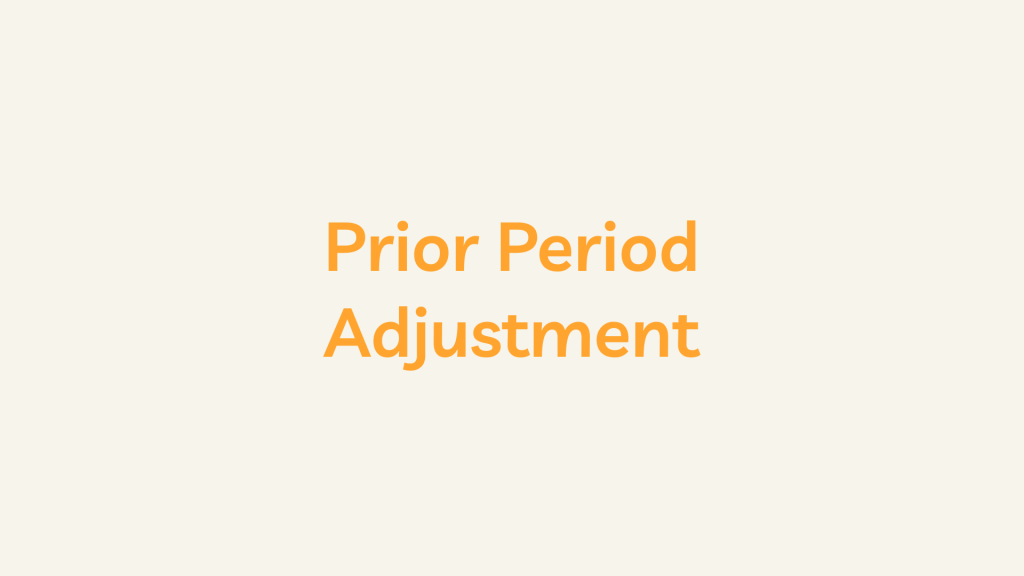What is Prior Period Adjustment?
A Prior Period Adjustment refers to a correction made to a company’s financial statements to rectify errors or omissions in reporting income, expenses, assets, or liabilities from a previous accounting period. This adjustment is necessary to ensure the accuracy and reliability of the financial information presented to stakeholders, including investors, regulators, and other interested parties.
Here are key aspects of Prior Period Adjustments:
1. Nature of Adjustments:
- Prior Period Adjustments can arise from various circumstances, including errors in accounting principles, mistakes in applying accounting policies, or the discovery of information unavailable in the previous reporting period.
2. Timing of Discovery:
- The need for a Prior Period Adjustment may arise when a company discovers an error or omission in its financial statements after they have been issued. This could occur during subsequent periods or as part of a routine audit process.
3. Financial Statement Impact:
- When a Prior Period Adjustment is made, it affects both the opening balance of the affected financial statement item in the current period and the retained earnings (or accumulated deficit) at the beginning of the earliest period presented.
4. Retrospective Application:
- Generally, Prior Period Adjustments are applied retrospectively. This means that the financial statements for prior periods are restated to reflect the correction as if the error had never occurred.
5. Restatement Process:
- Restating financial statements involves adjusting the financial data for each affected period, updating the opening balances, and making corresponding adjustments to the income statement and statement of cash flows.
6. Materiality Considerations:
- Materiality considerations often influence the decision to make a prior-period adjustment. If the error is deemed immaterial, it may be corrected in the current period without restating prior periods.
7. Reporting Requirements:
- Companies are generally required to disclose Prior Period Adjustments in their financial statements. This disclosure provides transparency to financial statement users about the nature and impact of the corrections.
8. Audit Implications:
- The discovery of errors leading to Prior Period Adjustments can have audit implications. Auditors may need to reassess their procedures and consider the adequacy of internal controls to prevent similar errors in the future.
9. Causes of Adjustments:
- Common causes of Prior Period Adjustments include mathematical errors, mistakes in applying accounting policies, changes in estimates, and the discovery of new information that was unavailable at the time of the original financial statement preparation.
10. Impact on Financial Ratios:
- Restating financial statements due to Prior Period Adjustments can impact key financial ratios and metrics. Stakeholders, including investors and analysts, may need to reassess their analyses based on the revised financial information.
11. Regulatory Compliance:
- Companies must comply with accounting standards and regulations that govern the correction of errors and the presentation of accurate financial information. Compliance ensures the integrity of financial reporting.
Conclusion
Prior Period Adjustment is a company’s financial statements correction to address errors or omissions from a previous accounting period. The process involves restating prior periods to reflect the correction retrospectively and disclosing the adjustments to provide transparency to stakeholders. The decision to make a Prior Period Adjustment is influenced by materiality considerations and the need to adhere to accounting standards and regulatory requirements.
